Fibro-My-What?
Let me explain…
The 12th of May is ‘Fibromyalgia Awareness Day’ – So what better way to become aware, than by reading this blog post!
You write it: FIBROMYALGIA
You say it: Fi – bro – my – al – gee – ah.
The origins of the word:
“fibro”for fibrous tissues such as tendons & ligaments
“my”indicating muscles
“algia” meaning pain.
Also referred to as: FMS (Fibromyalgia Syndrome)
“Fibromyalgia is a chronic condition of widespread muscle pain, profound fatigue & sleep disorder, along with many other symptoms.”
www.fibromyalgia-associationuk.org
According to the National Fibromyalgia Association; 3-6% of the world’s population has Fibromyalgia syndrome.
For those of you who follow my blog will know, after having the mumps in my final year of university I just couldn’t get my mojo back! I was diagnosed with ‘Post-Viral Fatigue’ which then brought on Chronic Fatigue Syndrome. Then two years later, November 2006 I was debilitated as I had developed the condition ‘Fibromyalgia’ at the then age of 23.
The amount of information about the condition has increased dramatically over this past 11 & a half years (no need to look at the sentence before and do the math and try to work out my current age…yeah I know some of you were going to, as I would too!! haha! – I’ll save you the sum, I’m a blessed 34 now.)
The Consultants physical examination for Fibromyalgia shows pain in all four quadrants of the body. Pain in at least 11 out of 18 identified ‘tender point sites’ being spots of extreme tenderness when they are pressed. (I had 18 out of 18 – literally, everything hurt even each finger and toe!) However, this is just testing for the outward signs of extreme pain.
Fibromyalgia and Substance P imbalance
Research has now identified that people with Fibromyalgia have altered amounts of certain chemicals in the nervous system and hormone deficiencies. Specifically the neurotransmitter ‘Substance P’ which is found in spinal fluid and is responsible for transmitting pain signals to the brain. People with Fibromyalgia were found to have three times the amount of Substance P – ultimately sending three times the amount of pain messages to the brain. The effect of this is ‘disordered sensory processing’ basically the brain registers pain when others might just experience a slight ache or stiffness.
Over the past decade, all over the world, there has been an increasing amount of research like this that has gone into the condition. From this, advancements in how it can be detected and treated have happened (although a longed-for cure isn’t given.)
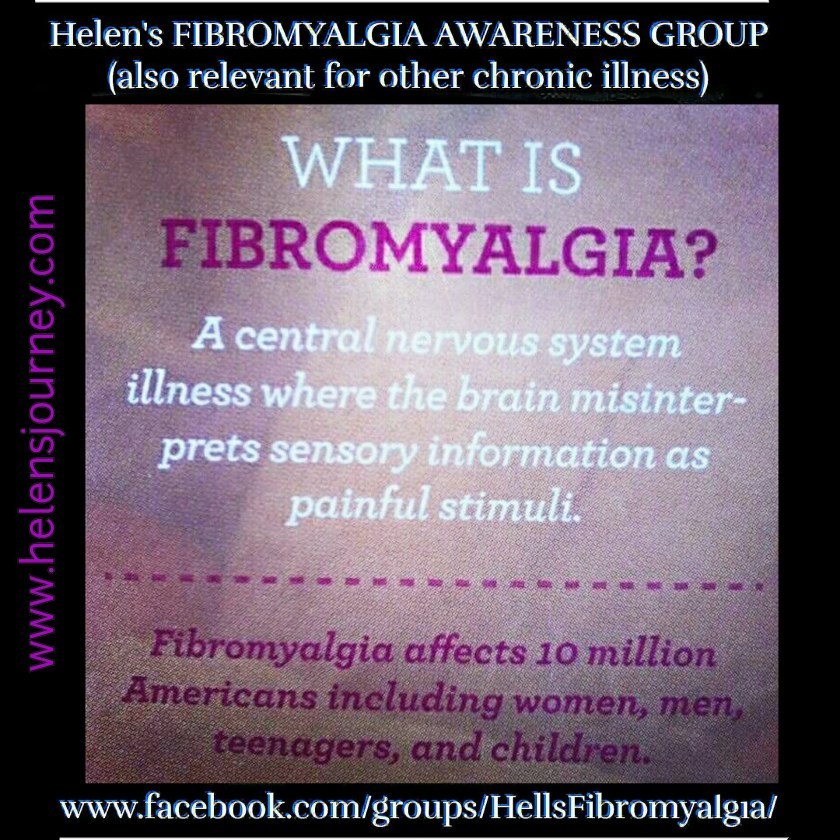
What is Fibromyalgia?
How do official health bodies describe Fibromyalgia?
Here is an official explanation of the condition and then I will talk about it in my own words as a sufferer:
“The exact cause of Fibromyalgia is unknown, but it’s thought to be related to abnormal levels of certain chemicals in the brain and changes in the way the central nervous system (brain, spinal cord and nerves) processes pain messages carried around the body.
The central nervous system (brain, spinal cord and nerves) transmits information all over your body through a network of specialised cells. Changes in the way this system works may explain why Fibromyalgia results in constant feelings of, and extreme sensitivity to, pain.
It’s also suggested that some people are more likely to develop Fibromyalgia because of genes inherited from their parents.
In many cases, the condition appears to be triggered by trauma or a physically or emotionally stressful event, such as: an injury or infection / giving birth / having an operation / the breakdown of a relationship / the death of a loved one, etc.”
What does Fibromyalgia feel like?
Explaining the health condition ‘Fibromyalgia’ from a sufferers point of view:
You know that hangover feeling you have the next morning after a long night out on the town drinking way more than you should have? Well, imagine having that hangover, the body stiffness, muscle aching and that run over feeling, constantly every day from the minute you wake up! That’s what people with severe Fibromyalgia have to deal with 24/7.
People with Fibromyalgia have overactive nerve endings. More of their nerves are ‘switched on’ and are over sensitive. So stimuli that wouldn’t usually cause the body a problem, can cause the person to feel pain and discomfort. This can feel like widespread pain / burning sensations / throbbing / stiffness / aching muscles / muscle spasms.
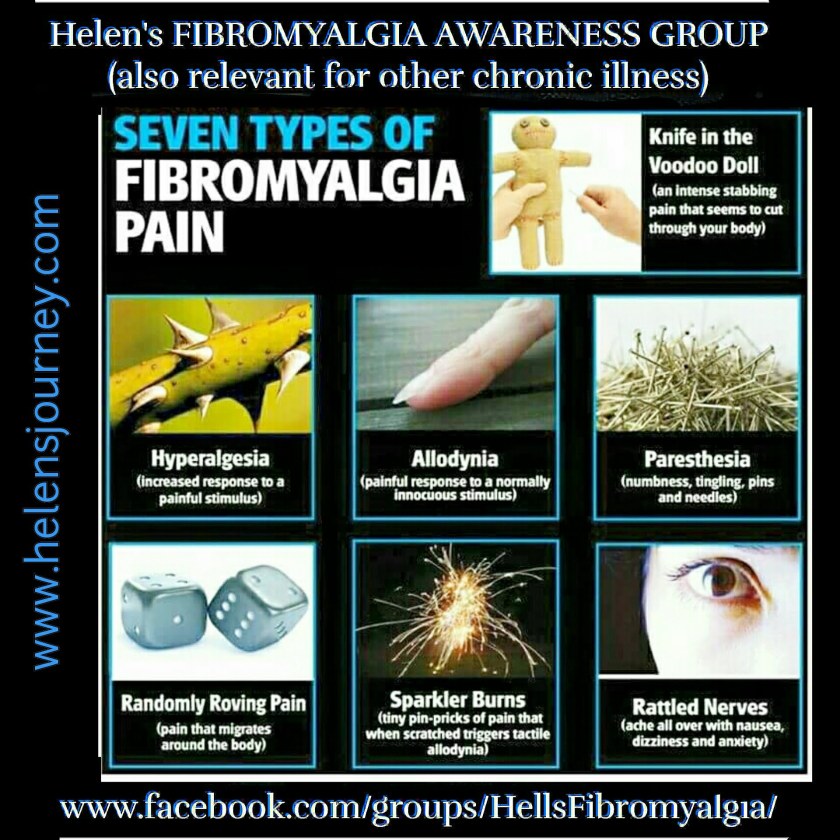
Unbalanced levels of chemicals in the brain and nervous system also result in hypersensitivity, pain messages to the brain being amplified and ‘sensory overload’ from surrounding stimuli such as light, sound, touch and other environmental factors.
Fibromyalgia and Hormone Imbalances
Hormone imbalances play a significant role too:
- Melatonin plays a role with the sleep issues
- Serotonin affects our circadian rhythm, it’s needed for deep sleep and its deficiency linked to major depression.
- Cortisol as too much of this stress hormone can put our bodies into a constant state of ‘flight or fight’ mode from chronic stress. also plays a role in adrenal fatigue, reducing inflammation, blood sugar levels etc.
An in-depth scientific research paper to read for more information is: Dysfunctional Neurotransmitter Systems in Fibromyalgia (click on name of article to open it in a separate tab)
Fibromyalgia Fatigue and sleep disturbance
Debilitating fatigue and Sleep Disorders also play a big role in the syndrome, both causing cognitive difficulties (trouble concentrating or thinking of words – also known as ‘Fibro Fog’ or ‘Brain Fog’), headaches/migraines and sleep deprivation.
Fibromyalgia and reduced mobility
Symptoms of pain, stiffness and aching can increase if you stay in one position for too long when sitting, standing or esp after sleeping. Common activities that cause problems for sufferers are things you may find easy. Such as dressing, showering, washing up, drying your hair, sitting at your desk at work, vacuuming, walking short or long distances, stairs, carrying shopping bags, the list goes on…
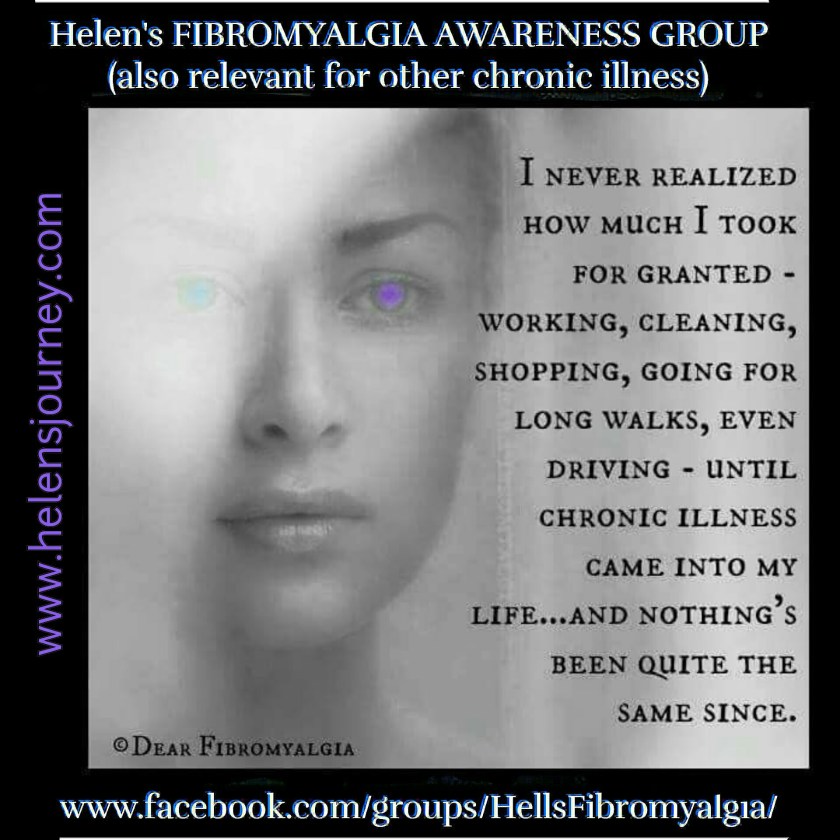
These everyday activities suddenly feel like mountains to climb and marathons to run. They can leave you exhausted and send so many pain signals to your brain that the pain is escalated into what we call a ‘Fibro Flare’ and many become bed bound for a period of time.
The severity of the pain can vary daily usually depending on how much you do physically, as the pain seems to get worse after physical exertion. Symptoms can change location in muscles all over the body frequently, depending on which muscles you use during daily activities.
What causes Fibromyalgia Flare-Ups?
Here are some Aggravating factors that can all contribute to symptom flare-ups.:
- Changes in weather
- cold or draughty environments
- hormonal fluctuations (premenstrual and menopausal states)
- stress
- depression & anxiety
- over-exertion
- emotional trauma or reacting to unexpected life events
- diet and vitamin deficiencies
- toxic overload and chemical sensitivities etc.
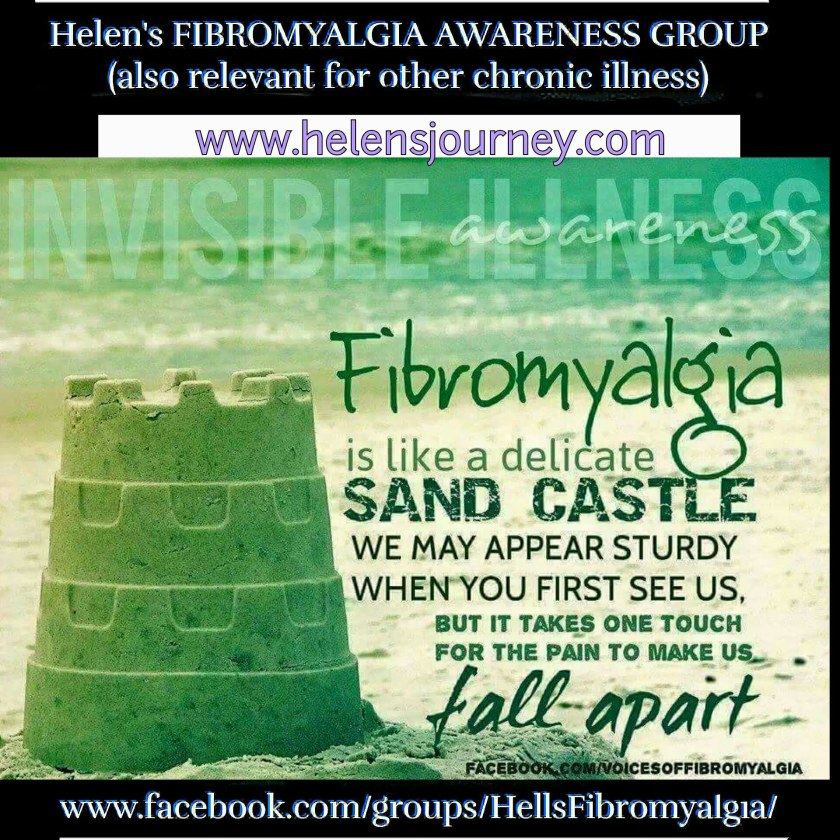
How is Fibromyalgia treated?
I was told when diagnosed that most patients can expect to have this problem lifelong yet in some cases it can go away for good or flare up again at different times in life.
However, I’m proof that worthwhile improvements can be obtained with appropriate treatment such as pain medication, physiotherapy, hydrotherapy, acupuncture, relaxation techniques, sleep improvement, massage, exercise, heat/cold therapy, rest, pacing, reducing stress, supplements, psychological support, a healthy and balanced diet, etc. A gentle and suitable, regular exercise routine is advised although painful, to help with trying to maintain muscle strength and movement.
As well as deterioration which I’ve experienced, the condition can also improve over time too as I’ve also experienced in the last couple of years. This is with appropriate treatment as well as medical advice; meaning you can increase your daily activities and become more active in life, it is possible for some. However, you need to pace yourself, keep up with your prescribed exercise routines, medication and other treatments that make up your own care plan.
“The goal is to live life in spite of fibromyalgia rather than having no life because of it. Take each day as it comes & make the most of it together with your loved ones.”
~ Quoting Helen’s Journey
Sadly, common painkillers you’d usually use to combat pain are generally ineffective against Fibromyalgia pain. However, there are tablets that doctors can prescribe to try to help, which may work differently in individual cases – such as tablets that try to block the pain signals to the brain or a form of morphine, etc. Medication is more commonly prescribed to help with the symptoms, not the cause though, such as medication to address the sleep disturbances caused by Fibromyalgia; this can then help with fatigue levels, resulting in altering pain levels. It is one big ongoing cycle as the cause is still present.
Fibromyalgia is a complex condition with a number of other conditions that can occur alongside it, making it very complicated to treat. Exactly what works for one person may not be the best treatment for another, as we all have different levels of brain chemicals inside us to make reactions to treatment more personalised in each case (and why some prescribed painkillers or pain signal blockers work differently for each person.)
Gut health also plays a huge role in our health – after all 80% of our immune system is stored in our gut!
In my opinion, the best treatment for Fibromyalgia is through a multidisciplinary approach, using medications, complementary and supportive therapies, and lifestyle adaptations. It is rare that one approach alone can manage Fibromyalgia in the best way possible. It isn’t just about physical health it is also about mental health, emotional health and gut health – as we are all three; mind, body and spirit.
REMEMBER: Just because one treatment doesn’t work for an individual Fibromyalgia patient, it doesn’t mean that there isn’t something else that will.
Holistic Therapies for Fibromyalgia
Alternative therapies also need to address our mental health such as breathing exercises and relaxation techniques to address muscle tension, stress and anxiety levels. Emotional help like speaking to a counsellor or joining a support group can help also – I have set up my own support group on Facebook where I post supportive photos, interesting web links, etc. Search for my group on Facebook: HELEN’S FIBROMYALGIA AWARENESS & CHRONIC ILLNESS SUPPORT GROUP. Or click HERE to join the group directly.
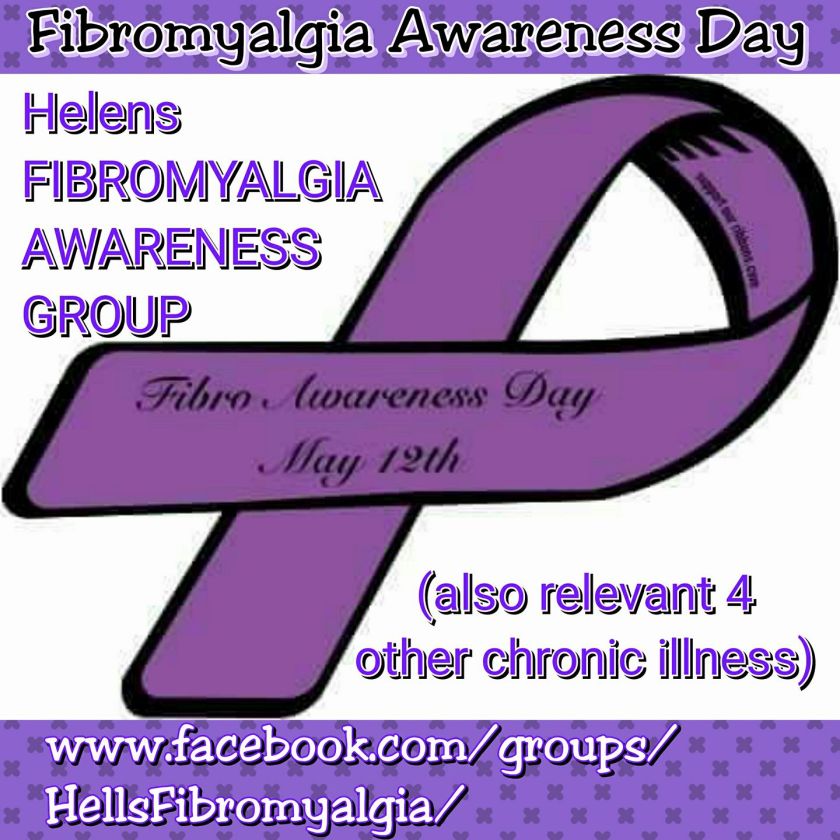
How can Support Groups help people deal with Chronic Illness?
Being diagnosed with the condition myself as a young adult, I felt it important to raise awareness especially for other young ladies who found themselves in the same boat as me. Although men can be affected too, about 9 out of 10 cases of Fibromyalgia are in WOMEN!
This is why, after being diagnosed & not finding much support was available to me, in Nov 2008 I set up a support group on the social media platform Facebook. My group named ‘Helens FIBROMYALGIA AWARENESS GROUP (also relevant 4 other chronic illness)’ now has 656 worldwide members (and hopefully a few more people will join after reading this article too… just click on the group name for it to open in a new window)
THE IMPACT OF CHRONIC ILLNESS ON LOVED ONES OF THE SUFFERER:
Because of its debilitating nature, Fibromyalgia has a large impact on everyone connected with a sufferer, from family and friends to employers. Family & friends etc, can help you live with fibromyalgia by learning as much as possible about the condition and then can show an understanding. This is why loved ones of sufferers are members of my support group not just sufferers themselves, as they need support and advice too.
Fibromyalgia may be invisible – but I’m not!
Fibromyalgia is also known as an ‘INVISIBLE ILLNESS’ as looking at someone with it, you would not necessarily see their suffering or realise they had painful muscles underneath their clothes & over sensitive nerves running throughout their body! That’s why awareness & having an open discussion like this is so important; there may be many people out there with this condition who are suffering alone, in silence, who may just need some advice, information, or encouragement to seek medical help.
“But you look fine”
To others, you may look fine and as too many of you, I look like a normal, happy person or just smiley Hel’s in my Instagram pictures ;-). However, although you have better days when you can do more activities – you then have bad days recovering & paying for doing normal things that those people don’t see! You know those sayings “Don’t judge a book by its cover” and “don’t judge what you don’t know” and “if you don’t know then get to know”…they all spring to mind!
I encourage you to go and read the poem I wrote all about unfair judgement: “Never judge a book by its cover” (click on poem name to open it in a new window)
Not every pain is as clear as a broken arm in a cast – awareness of invisible conditions is needed so badly! Just look at how some people go mad at someone using a disabled parking bay if they aren’t in a chair or have a stick! Disabilities aren’t that simple!
However, to be honest, you do get used to the pain & trying to push through daily life & when normal activities such as going out for a friend’s birthday comes up, you have to limit activity beforehand and plan out pain relief just so you can go. Yet, you go knowing that you will suffer and pay for it afterwards in pain and discomfort!
It’s because of my personality (& my Christian faith also) that I feel I am now able to try to put on a happier face & try to live life again the best I can (although it’s far from the norm) rather than just being a big ball of pain not taking part in life – like I did at my lowest point after diagnosis. It was a dark, dark, time of depression and debilitation that had me give up on life – but I’ve worked so hard to not go back to that place.
Being a Chronic Illness Warrior
Click HERE to watch me talk about my experience in this video as I’m interviewed for a project called ‘I AM WARRIOR… MY STORY’ by Giano Johal. Or you can click the following title to watch the Full video on Facebook: HELEN’S JOURNEY READS HER SPOKEN WORD ON BEING A CHRONIC ILLNESS WARRIOR & SHARES HER STORY
Or for a shorter clip of me just reading my spoken word piece on being a chronic illness warrior, click HERE!

Fibromyalgia – The invisible condition that you or someone you know may be suffering from and need to seek help for!
Personally, as a suffer myself, my piece of advice would be to seek help and medical advice. Some GP’s may not be fully informed about Fibromyalgia so ask to be referred to a pain clinic at your local hospital to see a Consultant and for treatments, a Rheumatologist or Physiotherapist.
If you aren’t happy with the treatment you are getting or the GP won’t refer you then contact places for advice (in England that will be PALS – Patient Advice and Liaison Service) Even if you only do one thing after reading this article, ring a helpline or look at listed websites for more information…
UK:
- FMA National Helpline (UK): 0845 345 2322
- Fibromyalgia Association UK provides a free information booklet and has over 100 regional support groups listed on their website: www.fibromyalgia-associationuk.org/content/view/16/47/
- Fibromyalgia Association UK www.fmauk.org
- www.ukfibromyalgia.com
- www.fibromyalgiasyndrome.co.uk
- NHS Direct website www.nhsdirect.nhs.uk to ‘health encyclopaedia’, ‘Alphabetical Index’, choose ‘F’ then select Fibromyalgia.
USA:
- Welcome to the American Fibromyalgia Syndrome Association www.afsafund.org
- The National Fibromyalgia Association http://www.fmaware.org
- National Fibromyalgia & Chronic Pain Association (NFMCPA) https://www.fmcpaware.org/
Articles & Groups:
- What I’ve Learnt from over a Decade with Chronic Illness! Top 5 Life Lessons Fibromyalgia has taught me…
- How to look after your Mental Health when you have Chronic Illness
- Helen’s Fibromyalgia & Chronic Illness awareness & Support Group on Facebook
Enjoy reading my posts and poems? Then don’t miss out when new stuff is posted –Please click here to join my Email Mailing List to receive an email notification when a new blog is posted!
Why not come & follow my blogging footsteps on other Social Media Platforms (click on names to take you to the different media profiles):
Facebook Page / Bloglovin / Instagram / Twitter / Pinterest / YouTube / Tumblr
Facebook: Fibromyalgia Awareness & Chronic Illness Support Group

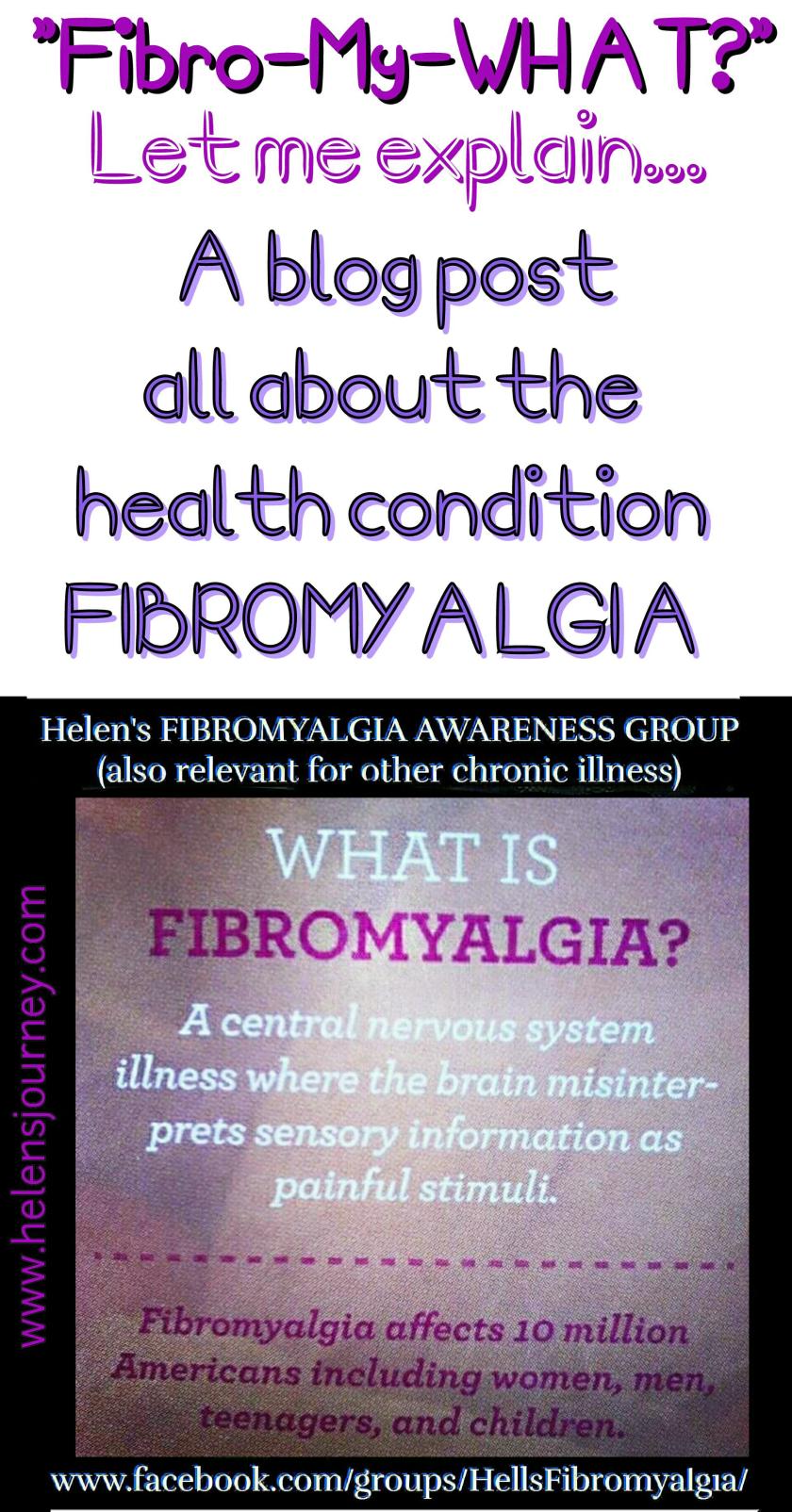



Thank you for this article. I came on it randomly on Pinterest. I have a fibromyalgia diagnosis, but have kiddos with Dysautonomia, autism, Down Syndrome, Dyslexia, ADHD, and so many other diagnoses. I don’t much mention or think too much about myself because I have to push through for everybody else. Thank you for describing what I feel. My Christian Faith gives me the ability to get up everyday and lean in trusting in Jesus.
LikeLiked by 1 person
Hi Lydia, so glad you found my article (a GODinscidence not just a coincidence maybe?!) and it resonated with your own experience. You defo sound like a chronic illness warrior with all your other carer and parent responsibilities along side your own struggles. Please feel free to join my facebook support group too for a place to share & feel supported (search: HELEN’S FIBROMYALGIA AWARENESS & CHRONIC ILLNESS SUPPORT GROUP). My faith is my hope throughout too. Will say a prayer for you and your family. Good to connect, Helen 🙂
LikeLike
Great info. Lucky me I discovered your blog by chance (stumbleupon).I have book marked it for later!
LikeLiked by 1 person
Hi Eleonora, so glad you ‘stumbled upon’ my blog! 😉 Please feel free to share with others or to join my Facebook support group discussed in this post. Thanks so much for the feedback, so glad you found the post full of great info. Hopefully, see you on my posts again soon… 🙂 Helen
LikeLike